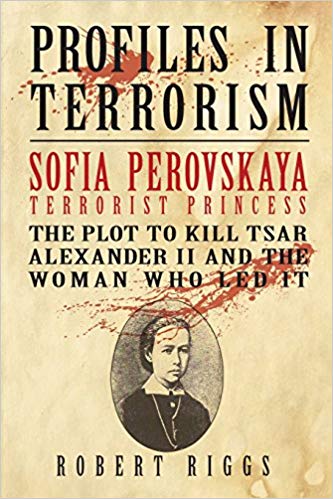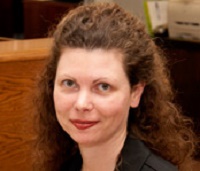
Professor Stephen F. Cohen (photo in Chronicle of Higher Education, by Vladislav Dokshin)
Professor Stephen F. Cohen and his wife, Katrina vanden Heuvel (editor of The Nation) spoke at the First Congregational Church in Berkeley on the evening of February 25th as part of his book tour for the newly released War with Russia? From Putin and Ukraine to Trump and Russiagate, Around 200 people were in the audience for this event, co-sponsored by the local Pacifica radio outlet (KPFA).
Cohen spoke first and much of what he said will be familiar to those who have followed his weekly interviews with John Batchelor and his columns in The Nation over the past five years. The thrust of his remarks involved the delineation of how Washington squandered the possibilities that came with the end of the 40-year cold war between the U.S. and the Soviet Union by choosing to take a triumphalist attitude. The decision to take that path has largely been responsible for the dangerous mess we now find ourselves in with the world’s other nuclear superpower.
Cohen helpfully defined what a cold war is: a relationship between two nations with more conflict than cooperation and no direct “hot” war. Historically, the cold war(s) between the U.S. and Russia have been the most important due to their military capabilities, mainly nuclear. He also pointed out that the U.S. and Russia have experienced 3 cold wars:
- 1918 – 1933 – During this period, the U.S. refused to recognize the Soviet Union and no dialogue occurred between the two powers; however, this cold war was not very dangerous due to the fact that there was no arms race. It ended when president Franklin Roosevelt pursued detente by officially recognizing the Soviet government.
- 1948 – 1989 – After the WWII alliance, relations broke down and an arms race emerged after the Soviet Union attained nuclear capability. There were periods of detente, the first was between Eisenhower and Khrushchev, followed by Kennedy and Khrushchev, Nixon and Brezhnev, and Reagan and Gorbachev.
- 2014 on – Cohen stated that he suspected a new cold war was in the making as early as the Clinton administration when Washington a) reneged on its promise to Gorbachev not to expand NATO eastward if he agreed to allow a reunified Germany into the military alliance, and b) attacked Serbia (a close ally of Russia with cultural and ethnic ties). But any doubts were swept away after the Ukraine crisis of 2013-14.
Cohen reminded the audience that the 40-year cold war between the U.S. and Russia (Soviet Union) was a negotiated settlement agreed to be in the interests of both parties and that there were no losers. All western leaders at the time acknowledged this fact. But during his re-election campaign, George H.W. Bush claimed that the U.S. had won the cold war and the conflation of the end of the cold war and the subsequent collapse of the Soviet Union began.
Cohen pointed out that it was now “axiomatic” and accepted as fact that the U.S. “won” the cold war. He cited the history books that his grandchildren now read in school as perpetuating this falsehood and the dangerous triumphalist attitude that goes along with it. Furthermore, most academic literature apportions blame for the current cold war on Russia, particularly on Putin. By contrast, most serious academic literature apportions blame in a more balanced way for the previous cold war.
He also discussed, of course, the media’s dangerous propagating of this misinformation and the blackout on alternative voices in the NYT/WaPo/MSNBC/CNN and, to a lesser degree, The Wall Street Journal and Fox which are both conflicted about Trump.
He reiterated that this was one of the things that made this cold war more dangerous than the last one: back then, some debate was allowed in the media and advocates of detente were organized and had a voice.
Other conditions that make this cold war more dangerous include the fact that the military divide is now on Russia’s borders instead of Berlin, providing no buffer zone. The proxy wars, such as Ukraine and Syria, are much closer to Russia’s borders rather than somewhere like Africa. Of course, they are very far away from the U.S.
Moreover, the zealous political and media project of characterizing Trump as a Russian asset or agent compromises his ability to effectively negotiate a deescalation of any possible military confrontation that may arise from the above mentioned proxy wars or an accident.
Cohen believes that in order to end this new cold war, Washington must accept that Russia has major power interests. This translates into no U.S./NATO military bases on Russia’s borders. He also believes that existential cooperation needs to happen, such as a partnership against terrorism.
My own thought on this last point is that Washington is not likely to be genuinely interested in going after terrorism when it has such a history of using terrorists to indirectly attack its perceived opponents’ interests. Examples include the use of terrorists in Afghanistan against the Soviet Union in the late 1970’s/early 1980’s and Operation Timber Sycamore in Syria in recent years. But the more general point of actively cooperating on major areas of real interest is well taken.
Vanden Heuvel spoke after Cohen. She had a different emphasis with her remarks. One of the first points she made was the toxic effects that “cold wars” have on progressive interests domestically. They narrow the space for dissent, adversely affecting civil liberties and stifling debate on critical issues. They also serve as a self-perpetuating excuse to funnel disproportionate amounts of the budget into “defense,” thereby hobbling the funding of much-needed domestic programs that most Americans want, such as Medicare for All and infrastructure projects.
Another point vanden Heuvel made, which was touched on by Cohen, was the very disturbing trend of criminalizing diplomacy. Anyone who has had contacts with Russia is now being cast under suspicion of traitorous intent. First, it was individuals associated with Trump – many of whom are admittedly shady and corrupt in their financial dealings – but the net seems to have been cast so broadly by investigators that actions that were previously considered a normal part of possible diplomacy have been characterized as disloyal.
Then it spread to those of Russian nationality who have been studying in the U.S. and networking with like-minded Americans to expand civics projects in Russia.
Now Vanden Heuvel recounted the recent experience of a respected independent scholar she knows who specializes in arms control issues who has been asked by the Senate Intelligence Committee to provide all documentation involving his contacts with Russians and travel to Russia.
Cohen has made reference to the fact that he and his wife don’t always agree with respect to their analysis of the domestic Russian political scene or the value (or lack thereof) of the Mueller investigation. This became evident in the Q&A portion of the event, with vanden Heuvel a couple of times interjecting probing questions as Cohen was finishing his answer – a sign that she didn’t entirely agree with what he was saying.
One of these questions had to do with whether they thought Trump could possibly be a vehicle for peace with Russia. Cohen said that even if we disagree with other things that Trump does, we should support his intent and any actions he may take to deescalate with Russia. Vanden Heuvel made it clear that she didn’t think Trump’s actions indicated he was capable of being a vehicle for peace. She asked Cohen whether he agreed that peace wasn’t just the absence of conflict or the aversion of crisis.
A man in the audience behind me shouted out, “But that would be a great start right now, wouldn’t it?”
I couldn’t disagree with him.


